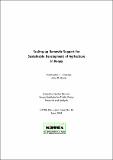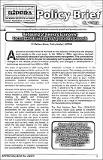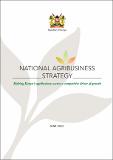| dc.description.abstract | Despite prospects for recovery of the agricultural sector in Kenya, there are a myriad of constraints and challenges. Among these are spiralling prices of key agricultural inputs such as fertilizer and energy, political conflicts and poor weather conditions. Coupled with resource constraints and poor timing of government responses, these constraints are likely to depress agriculture production and aggravate high food prices and uncertainty about access to food staples. Meanwhile, government expenditures on agriculture are minimal and can hardly stimulate desired production and growth rates. For instance, the current and projected expenditures on the entire productive sector fall below the recommended 10 per cent target reflected in the Comprehensive Africa Agricultural Development Programme (CAADP) of the New Partnership for Africa s Development (NEPAD). The WTO agreement on agriculture discourages member states from increasing trade-distorting interventions or direct price payments to
agricultural producers. It also provides flexibilities to enable member states undertake agricultural reforms to protect their livelihoods, food security and rural development concerns. Kenya has considerable freedom to scale up agriculture expenditures without the contravention of her domestic support commitments at the WTO. Such support can be packaged under the Green Box measures, which comprise government financed programmes and the de minimis provisions. | en |




